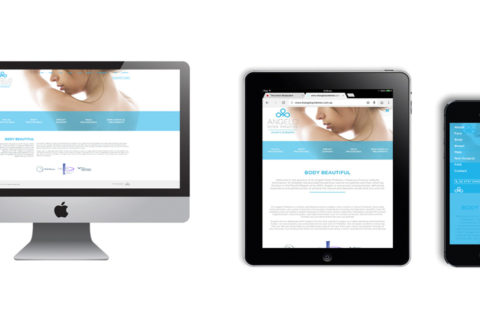Overview
Although the word “audit” isn’t usually associated with enthusiasm, a well-conducted design audit can yield some exciting results for your product and brand. A design audit entails examining all of your organization’s design elements. It is done in order to maintain brand consistency across all media and outlets. This includes not just the visual design components of your user experience but also the spoken and written elements. The goal of design is to make it easier for people to interact. This interaction might take several forms. While there are numerous straightforward metrics to confirm when a great design wins over users, determining where design fails is more difficult.
Inconsistencies in website design can result in different messages being displayed on different sections of the site. This may appear to be a little incident, but these inconsistencies build up and send people mixed signals over time. Users that are perplexed are less likely to convert or build long-term relationships with a brand.
What is a Design Audit?
Every competent product designer understands that consistency in design has a significant impact on the customer experience. As designers, it is our responsibility to guarantee that clients receive the same message at every touchpoint. This leads us to the design review. A website design audit is essentially an inspection to ensure that the company’s message is consistent across all platforms. You may compare what users are actually seeing throughout their user experience to what your organization’s visual elements and key messages are. Moreover, you can also fix any inconsistencies by assessing your organization’s visual elements and core messages.
A design audit is simply an examination of a company’s design features and branding requirements. Its primary function is to ensure that branding is consistent across all media and sources. When we talk about branding, we usually think of visual design aspects, but it also includes written and verbal communication, as well as the user experience. A good design audit would consider these as well to ensure that everything is in order. The need for a design audit, in reality, is a hint of excellent things to come. It simply signifies that a company has developed significantly and now has to refocus its design efforts. Let’s quickly go through the advantages of a design audit for businesses before diving into how to conduct one.
Why is a Design Audit important?
The feel and look created by your visual assets are critical in determining how the public perceives your brand and hence is an essential aspect of your company’s identity. When you manage a small firm, this is usually much easier to handle, but a thorough audit can help you avoid any future inconsistency issues as your company grows. For example, an audit can assist you in making sure that all of the chosen graphic elements are applied consistently across all marketing materials and that your business cards don’t have different typefaces on them. If you want to develop trust, you must maintain your user experience constant. And as your company expands and adds more features and parts to your product, this becomes increasingly difficult to manage.
Benefits of Design Audit
A good design audit would consider these as well, to ensure that everything is in order. The need for a design audit, in reality, is a hint of excellent things to come. It simply signifies that a company has developed significantly and now has to refocus its design efforts. Let’s now quickly go through the advantages of a design audit for businesses before diving into how to conduct one.
The audit of visual branding:
First and foremost, all design assets must be gathered. Collect any advertisements, social media postings, the website, including desktop and mobile versions, mobile apps, letterheads, and business cards. Lead magnets, content upgrades, master lectures, and webinar slides should all be included. The goal here is to examine the various collaterals to the notice patterns, as well as their variances. You’ll note that your website has a lot of functionally comparable sections, yet they’re all designed differently. You also know that you’ll need to sit down and double-check that the footer is consistent across all pages or that the custom Leadpages images use the correct brand colors. Additionally, this may provide you and your design team with ideas for future branding updates. Perhaps you’ve used too many or too few colors to convey the mood and feel you want to convey.
Branding components such as tone, voice, and message:
While you’re looking at all of the aesthetic features, don’t forget to think about the content. When conducting your design audit, it’s critical to analyze the actual content once again. You must ensure that the tone, voice, and message are all consistent and correct. It’s crucial to keep detailed notes on all of your marketing materials. Pay attention to anything that doesn’t sound like the company anymore, as well as any evolving patterns that don’t seem to match. You may discover that your organization requires a more authoritative tone, a more fun tone, or a softer lexicon. Check to see if you can make the company’s overall tone, voice, and message stronger, better, and more relevant to the target audience.
Usability and accessibility heuristics:
A heuristic evaluation is another feature of a competent design audit. This one focuses on the design process, assessing a website’s or app’s usability and accessibility. As usability and accessibility are the points of contact between you and your consumers, they are essential for a positive user experience. These also contribute to the success of your company and brand. Usability issues will influence people’s perceptions of your firm. They can be simple, such as a faulty link, or complex, such as a problematic online order form. Problems with accessibility, such as missing alt tags or low contrast between text and background, are also significant.
Making use of a design system:
All of this can be combined into a design audit system. It’s critical to regroup after you’ve completed the audit. From there, you may determine what should be removed, what should be retained, and what should be changed. Consider developing a design system when it comes to visual design and brand messaging. Maintaining consistency with your styles in a design system eliminates the need for a design audit every few months.
Consistency Build Trust:
Building relationships with individuals requires consistency. You develop a rhythm with people based on constant behaviors you demonstrate through staying in touch, working, or playing together. People will build trust in you if you remain consistent. People will come to rely on your promises if you do what you say you’ll do. Following through on your promises will increase trust in you and improve your connection overall.
It is impossible to overstate the importance of consistency in establishing trust with your audience. It’s one of the most critical aspects of successful product design, and you should keep it in mind at all times. But users aren’t the only ones you’re concerned about; we’re also assisting in developing internal trust and consistency. For example, a design audit can help your team gain a better understanding of their direction and goals, making it a fun and productive way to bring your team together.
Key points to remember:
The following are the most crucial points to keep in mind:
- You must examine your company’s aesthetic features as well as its overall message, tone, and voice.
- One of the most essential aspects of effective design and a trustworthy user experience is consistent communication with your audience.
- Make sure that everyone on your team understands your visual branding and the type of communication you want to have with your audience.
Bottom Line
A design audit can be highly beneficial, as you can see. It will improve the user experience while also increasing brand consistency for your firm. Remember that a design audit is essentially a branding re-calibration, implying that your business and brand are evolving. We help our clients know what they need to do to improve the graphics and message of your brand.
Follow our easy-to-follow key points to each phase of a comprehensive design audit, and you’ll be able to see any inconsistencies in your own business and fix them right away! Do you find this blog interesting? Then please check our blogs too. If you have any queries, then please do contact us. We are here to help you out! To know more about us and our services, then check out our website.




